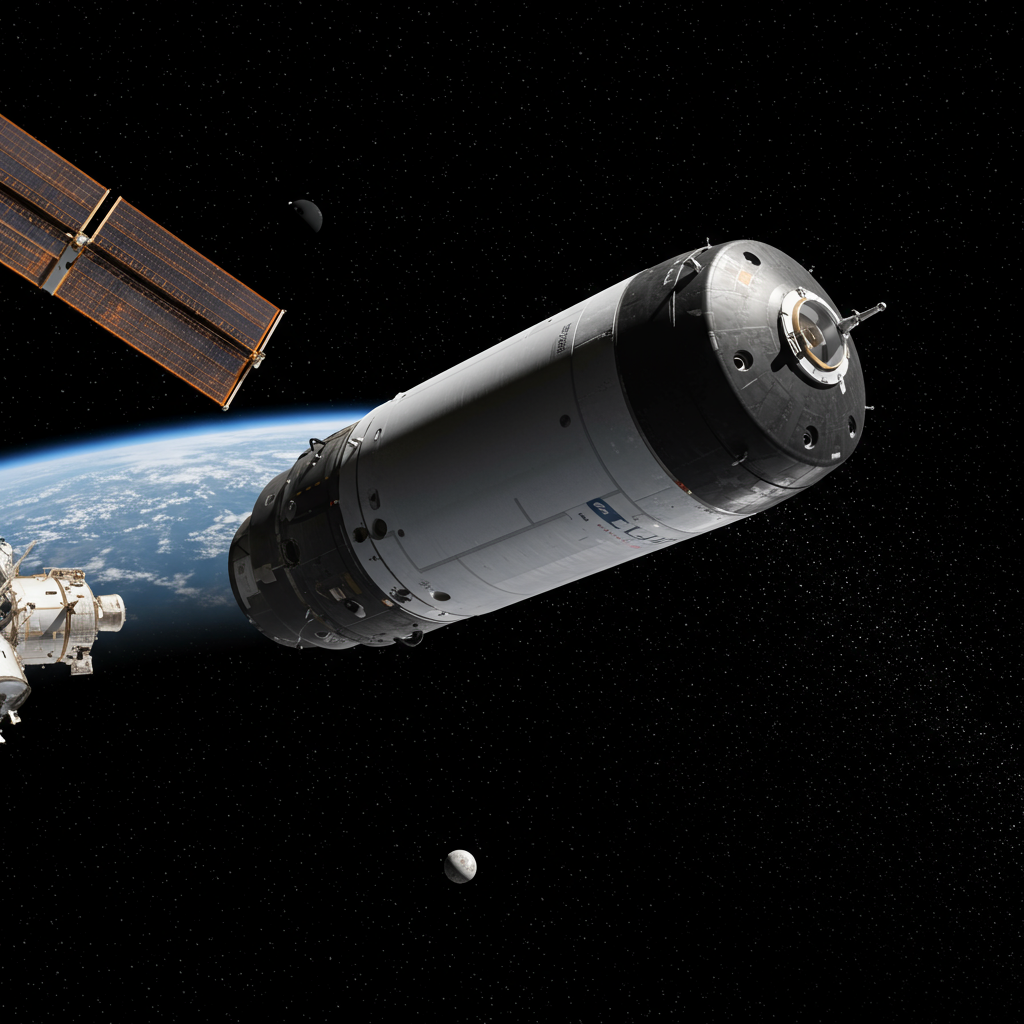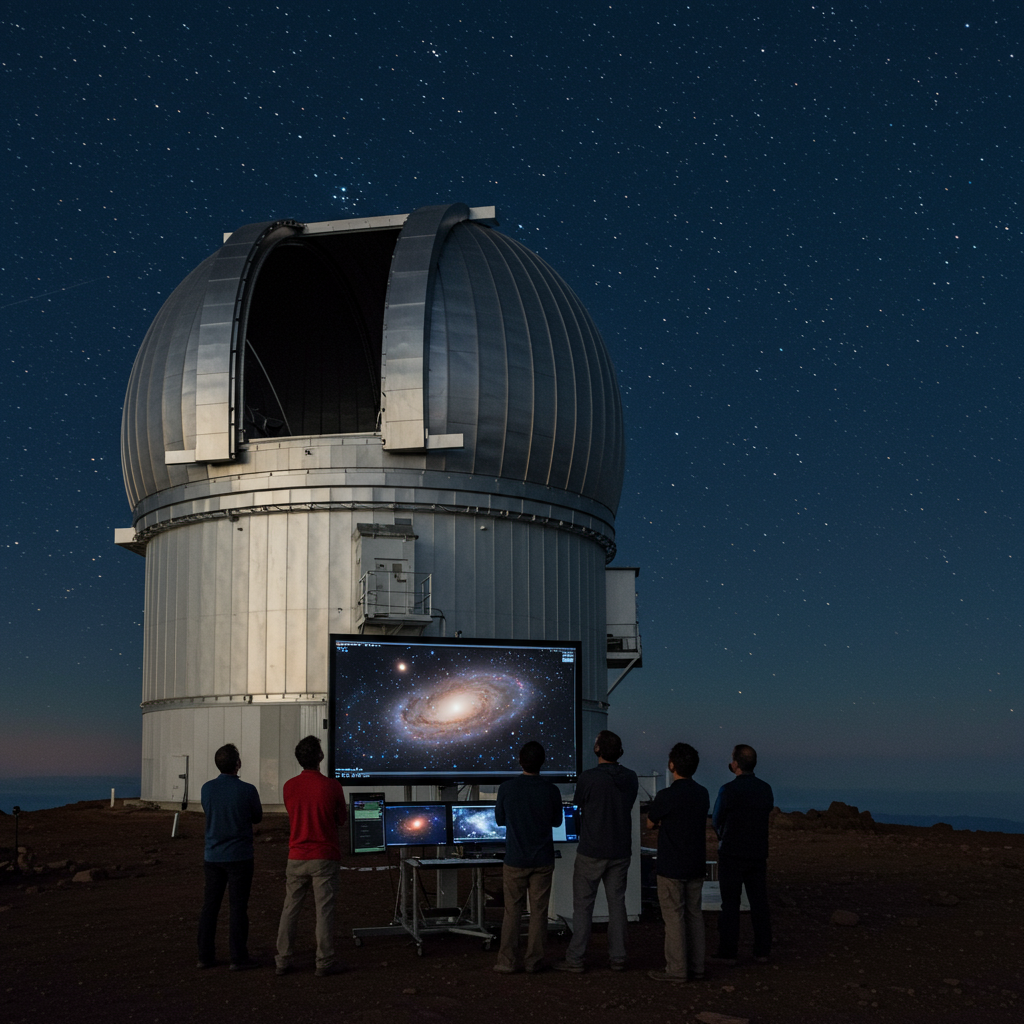The International Space Station (ISS) received a critical infusion of supplies, cutting-edge science, and a groundbreaking new capability on August 25, 2025. An unpiloted SpaceX Dragon cargo capsule, designated CRS-33, successfully docked with the orbiting outpost, marking a significant milestone for ongoing space operations. This mission delivers essential provisions while ushering in a new era of orbital maintenance for the venerated laboratory. The successful rendezvous highlights the growing importance of commercial partners in sustaining human presence in space and advancing future exploration goals.
A Critical Delivery for the Orbiting Laboratory
The SpaceX Dragon C211, launched just Sunday from Cape Canaveral Space Force Station aboard a Falcon 9 rocket, completed an impressive 28-hour orbital chase. The capsule expertly navigated its approach, executing an ahead-of-schedule docking at the ISS’s forward port at 7:05 a.m. EDT. This precision maneuver occurred 260 miles above the Ivory Coast of Africa, showcasing SpaceX’s consistent operational excellence. The mission delivered over 5,000 pounds (approximately 2.5 tons) of vital equipment, crew provisions, and scientific materials.
Astronaut Mike Fincke, currently stationed aboard the ISS, radioed his appreciation. “We’d like to say thanks to everybody who made the cargo and loaded the cargo and launched the cargo,” Fincke communicated. “It’s our job now to take care of it from here. We’ll do our very best for all the science that’s now aboard. Also, we very much appreciate the resupply.” This sentiment underscores the profound impact these regular resupply missions have on the daily lives and groundbreaking work of the astronauts.
More Than Just Food: Sustaining Life in Space
Among the diverse cargo manifest were approximately 2,400 pounds of essential crew supplies. These provisions ranged from fresh food items, coffee, and tea to an astonishing 1,500 tortillas. Bill Spetch, ISS operations integration manager at the Johnson Space Center, explained the specific choice of tortillas. “We fly tortillas because… other breads and things like that have too many crumbs,” Spetch noted. These crumbs would simply float freely in microgravity, posing a hazard to equipment and air filtration systems. Tortillas, therefore, serve as an indispensable, crumb-free bread substitute for astronauts dining in weightlessness.
Pioneering Science for Future Space Exploration
Beyond sustenance, the CRS-33 mission carried nearly 1,000 pounds of groundbreaking science gear. Acting NASA Administrator Sean Duffy emphasized the strategic importance of these commercial resupply missions. Duffy stated they “deliver science that helps prove technologies for Artemis lunar missions and beyond.” This clearly links current SpaceX Dragon ISS research directly to NASA’s ambitious plans for returning humans to the Moon and eventually sending them to Mars.
The scientific cargo aboard this flight is particularly forward-looking. It includes a metal 3D printer designed to test the feasibility of manufacturing spare parts and tools on demand in space. Another key experiment involves a liver tissue bioprinter and bone-forming stem cells, alongside a specific bioprinting investigation aimed at creating an implantable medical device to support nerve regrowth. This device would bridge severed nerves while simultaneously delivering drugs to promote regeneration. These experiments are crucial for developing self-sufficiency and robust medical support systems, which will be vital for future long-duration missions where resupply from Earth is impractical.
Microgravity’s Lab: Innovations on the ISS
The International Space Station has been a beacon of international collaboration and scientific discovery for decades. As NASA prepares to mark 25 years of continuous human presence aboard the lab in November, the station’s legacy continues to grow. Heidi Parris, associate program scientist for the space station, highlighted its profound contributions. The ISS has hosted over 280 residents, facilitated more than 4,000 scientific experiments and technology demonstrations, and engaged over 5,000 researchers from more than 110 countries globally. This microgravity research platform remains unparalleled for pushing the boundaries of human knowledge and technological advancement.
SpaceX Dragon Takes on a New, Vital Role: Altitude Maintenance
One of the most critical and innovative components of this mission is an add-on thruster kit, housed within the Dragon’s open trunk section. This “boost kit” is designed to perform orbital reboost operations for the ISS. The space station’s altitude slowly decays over time due to the minimal atmospheric drag present even at its orbiting height. Bill Spetch explained, “To counteract that drag, we must occasionally raise the altitude of the ISS.” Historically, Russian Progress cargo spacecraft have primarily handled these essential re-boost operations by delivering propellants and firing their thrusters or those on the station.
However, the integration of this new boost trunk with the SpaceX Dragon ISS marks a significant shift. The Dragon will now supplement this critical capability, providing roughly a quarter of the propulsion needed annually to sustain the station’s 260-mile-high orbit. This capability takes on increased importance given the evolving geopolitical landscape, with discussions about Russia potentially withdrawing from the ISS consortium in 2028. Should this occur, relying on other commercial vehicles like Dragon and Northrop Grumman’s Cygnus for altitude maintenance becomes absolutely vital. The boost kit, equipped with two Draco engines and six propellant tanks, is scheduled to commence altitude adjustments in September 2025. A series of planned burns will extend periodically throughout the fall, with the first re-boost anticipated around September 3rd, lasting approximately 20 minutes.
Securing the Station’s Future Orbit
This orbital reboost capability provided by the Dragon represents a strategic enhancement for the International Space Station’s long-term sustainability. Sarah Walker, director of Dragon mission management at SpaceX, stated that during its five-month docking period, the CRS-33 Dragon’s boost kit will provide propulsive capability equivalent to “one and a half Progress missions.” This demonstrates a robust and flexible approach to maintaining the station’s precise orbital location. It solidifies the role of commercial spaceflight partners in ensuring the longevity and operational viability of humanity’s premier orbiting research laboratory.
The Broader Impact of Commercial Space Resupply
The CRS-33 mission represents SpaceX’s 33rd flight under NASA’s Commercial Resupply Services program. This consistent track record underscores the reliability and efficiency of commercial spaceflight providers. From delivering life-sustaining cargo to enabling cutting-edge scientific investigations and now contributing directly to station-keeping, commercial partners have become indispensable to NASA’s human spaceflight endeavors. These missions are not merely logistical exercises; they are integral to the very fabric of space exploration.
A Testament to Reliability and Innovation
The successful docking and the groundbreaking new altitude maintenance capability solidify SpaceX’s standing as a leader in private spaceflight. The company’s innovative solutions are not only making access to space more routine but are also actively shaping the future of how we operate and explore beyond Earth. This cargo resupply mission, therefore, is more than just another delivery; it’s a testament to how human ingenuity and commercial enterprise are combining to push the boundaries of what’s possible in the cosmos.
Frequently Asked Questions
What specific new technologies did the SpaceX Dragon CRS-33 mission deliver to the ISS?
The SpaceX Dragon CRS-33 mission delivered several innovative technologies crucial for future space exploration. Key items include a metal 3D printer for on-demand manufacturing in space, a liver tissue bioprinter, bone-forming stem cells, and an experimental device for 3D bioprinting nerve-regeneration implants. These tools and experiments aim to develop self-sufficiency and advanced medical support systems for astronauts on long-duration missions to the Moon and Mars, reducing reliance on Earth-based resupply.
How will the SpaceX Dragon now contribute to maintaining the International Space Station’s orbit?
The Dragon C211 capsule includes an add-on “boost kit” in its trunk section, equipped with Draco thrusters and propellant tanks. This system will perform orbital reboosts to counteract the natural atmospheric drag that gradually lowers the ISS’s altitude. Traditionally, Russian Progress spacecraft handled these operations. Starting in September 2025, the Dragon’s boost kit will supplement this function, providing approximately one-quarter of the annual propulsion needed to maintain the station’s 260-mile-high orbit, significantly enhancing the ISS’s operational independence.
What is the significance of the CRS-33 mission for future long-duration space exploration?
The CRS-33 mission is highly significant for future long-duration space exploration, particularly NASA’s Artemis lunar missions and potential Mars expeditions. By delivering advanced technologies like 3D metal printers and bioprinters, the mission directly supports the development of capabilities for in-space manufacturing and advanced medical care. Furthermore, the Dragon’s new role in altitude maintenance reduces reliance on international partners for a critical function, demonstrating a more robust and self-reliant approach to sustaining human presence far from Earth.




